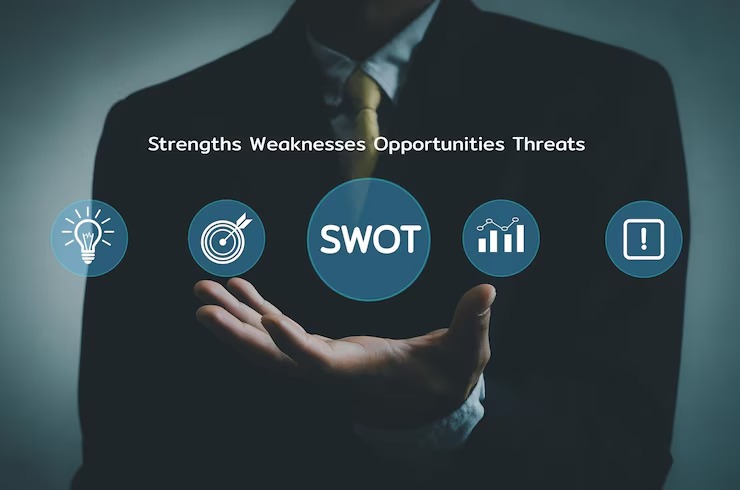
-
-
What Is SWOT Analysis?
Essentially, SWOT analysis offers a methodical, evidence-based examination of an organization’s strengths and weaknesses, whether inherent or in its industry context. It aims for objectivity, steering clear of biases and subjective viewpoints, to provide practical insights. It’s more of a compass than a strict roadmap, offering guidance rather than absolute directives.
-
The Essence of SWOT Analysis
-
SWOT analysis serves as a tool to gauge business performance, competitive landscape, risks, and growth opportunities across various business units, products, industries, or entities.
By leveraging internal and external data, it steers businesses towards viable strategies while cautioning against less promising avenues. External parties like independent analysts, investors, or competitors can also use SWOT analysis to assess the strength or weakness of a company, its product lines, or its industry.
3. SWOT Analysis Components
Strengths
These encompass an organization’s areas of excellence and competitive differentiators, such as a robust brand presence, a loyal customer base, sound financial standing, cutting-edge technology, etc. For instance, a hedge fund might possess a proprietary trading strategy yielding superior market returns, prompting considerations on leveraging this advantage to attract new investors.
Weaknesses
Weaknesses denote areas where an organization falls short, hindering optimal performance and competitiveness. These could range from weak brand recognition, high employee turnover, excessive debt burden, flawed supply chain, to inadequate financial resources.
Opportunities
Opportunities highlight external factors that could be advantageous for the organization. For instance, a reduction in tariffs by a country could open up new export markets for a car manufacturer, leading to increased sales and market share.
Threats
Threats encompass external factors posing risks or challenges to the organization’s well-being. These could include natural disasters like drought affecting agricultural yields, escalating material costs, intensifying competition, labor shortages, and more.

